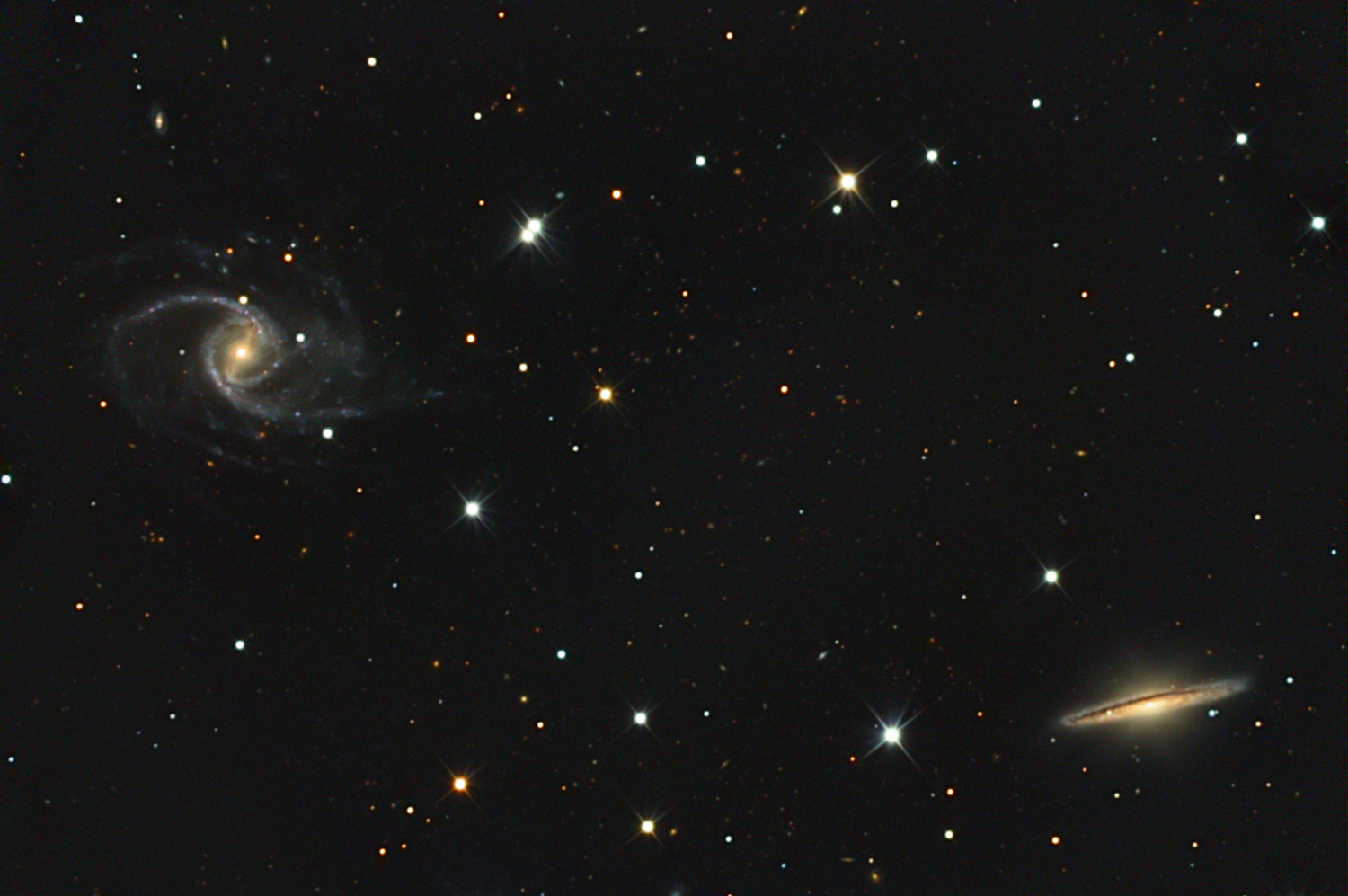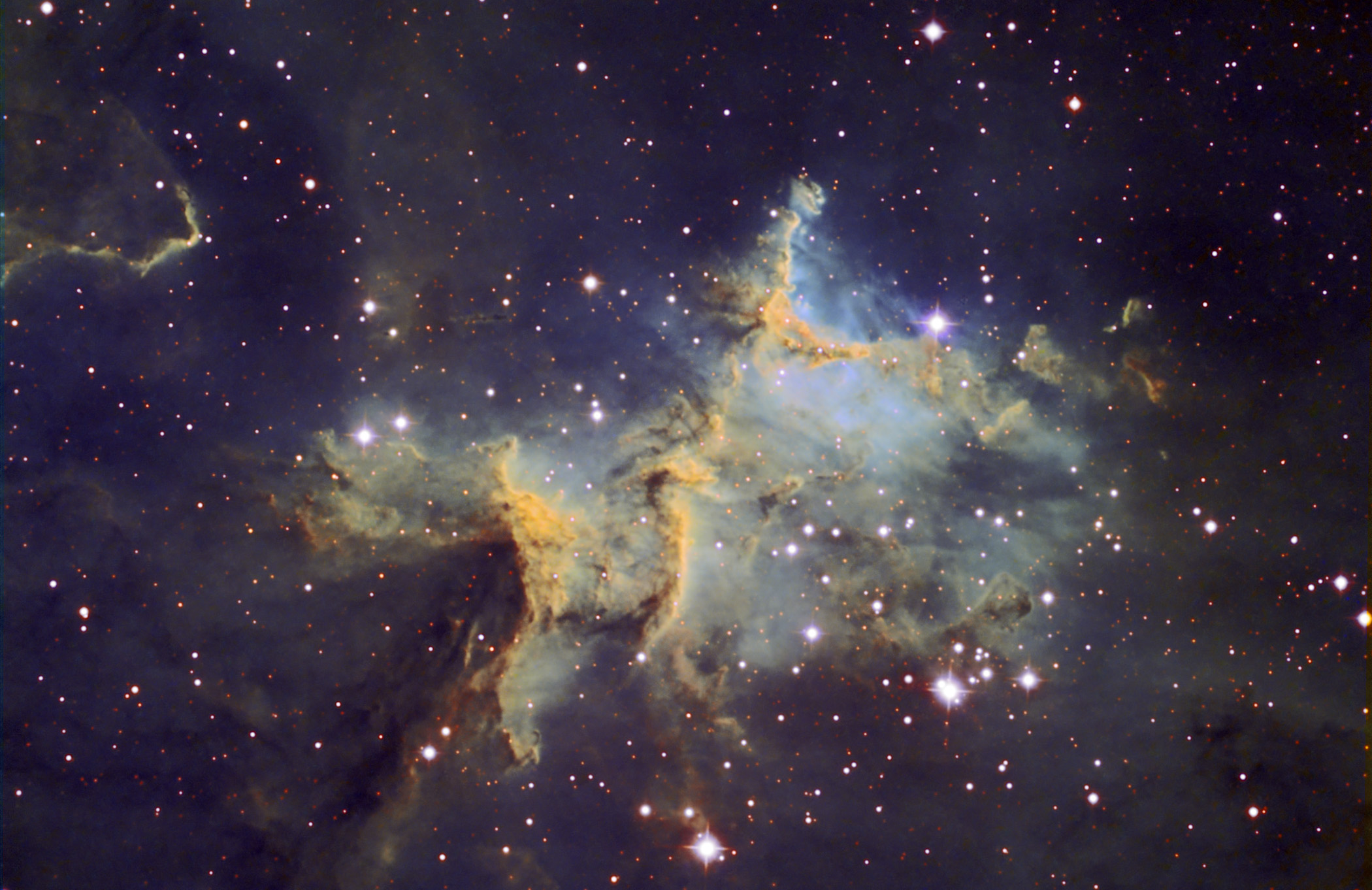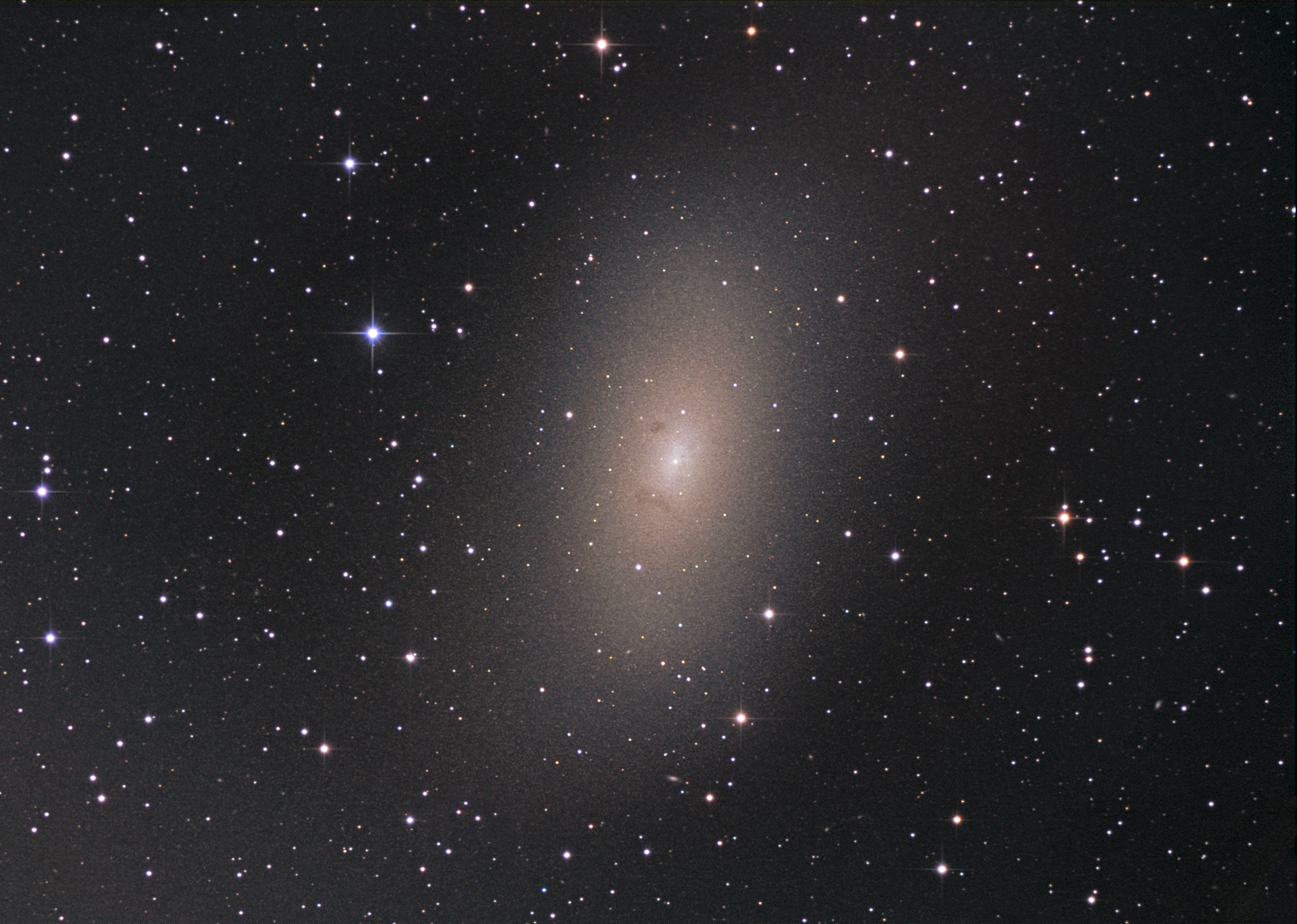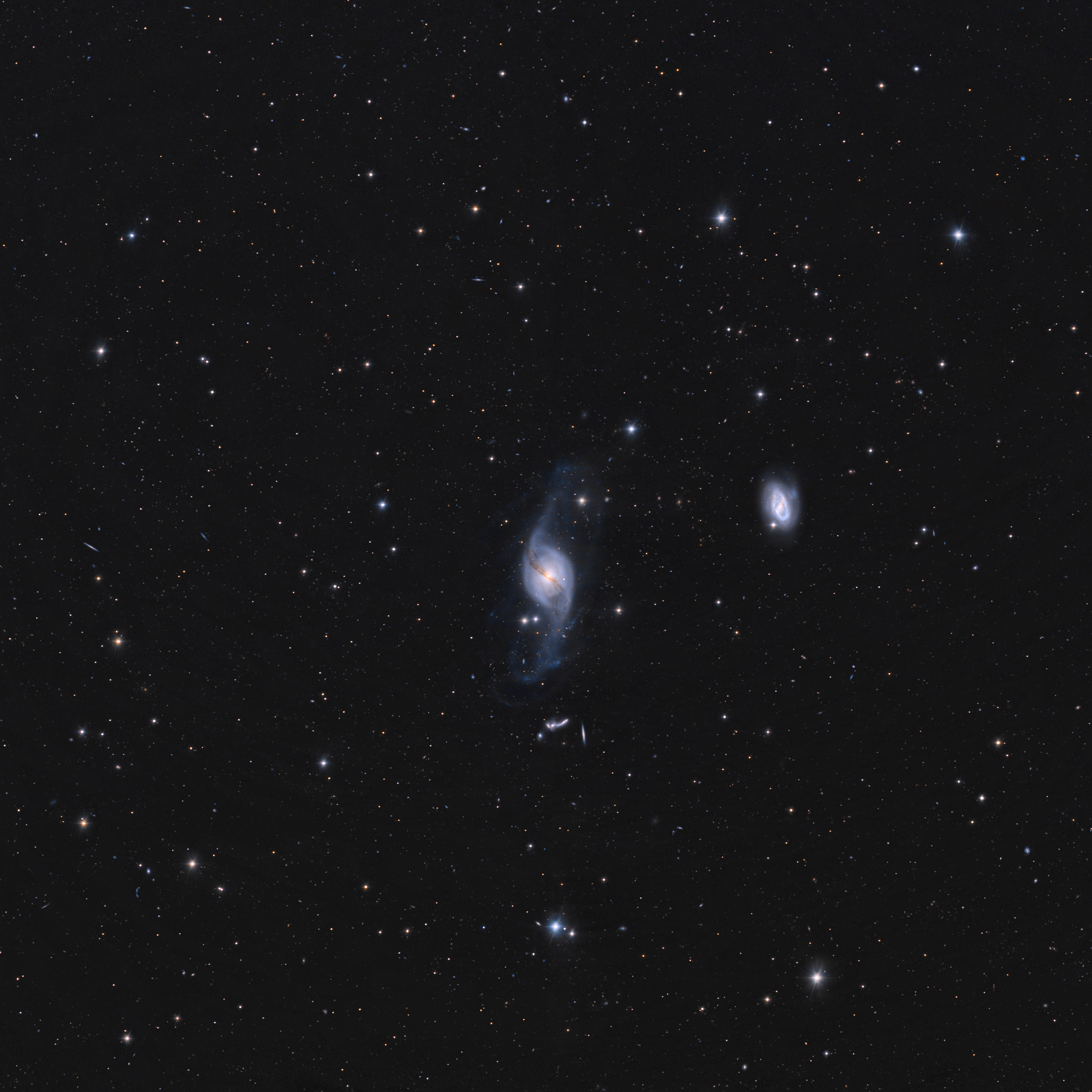
The constellation Triangulum, called the Nile delta, Deltotum, or the Island of Sicily by the ancients, is home to M33, a spiral galaxy sometimes called the Pinwheel Galaxy or simply the Triangulum Galaxy. It was probably discovered by Hodierna prior to 1654, but was independently discovered by Charles Messier in 1764 and made a part of his grouping of Messier, or M-, objects. M33 is over 50,000 light-years in diameter, making it the third-largest in our Local Galactic Sector, after Andromeda and our own Milky Way. M33 is actually approaching our galaxy at a rate of about 182 km/s or more accurately, wuth regards to motion around the galactic center, around 24 km/s.
 Two galaxies, NGC 5905 and 5908, are meeting in the constellation Draco. Each is about 140 million light-years away from Earth, and about 500,000 light-years away from each other. Both are spiral galaxies viewed from different angles, showcasing the variety of possible images that can be seen when viewing these galaxies. NGC 5905 has several bright star clusters branching out from its central bar. 5908 is viewed on edge; the central nucleus can be seen as very bright, partially obscured by a dark line indicative of its disk. NGC 5908 is very similar to another spiral galaxy, the Sombrero Galaxy, whose shape is caused by an unusually large central group of stars, giving it a "hat-like" appearence
Two galaxies, NGC 5905 and 5908, are meeting in the constellation Draco. Each is about 140 million light-years away from Earth, and about 500,000 light-years away from each other. Both are spiral galaxies viewed from different angles, showcasing the variety of possible images that can be seen when viewing these galaxies. NGC 5905 has several bright star clusters branching out from its central bar. 5908 is viewed on edge; the central nucleus can be seen as very bright, partially obscured by a dark line indicative of its disk. NGC 5908 is very similar to another spiral galaxy, the Sombrero Galaxy, whose shape is caused by an unusually large central group of stars, giving it a "hat-like" appearence




